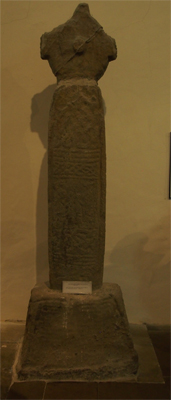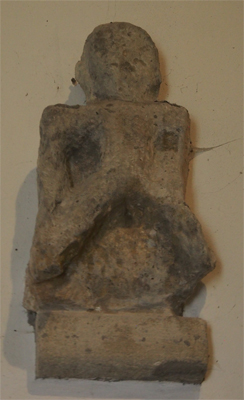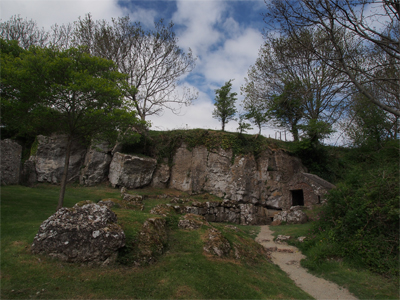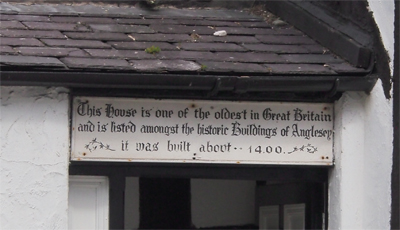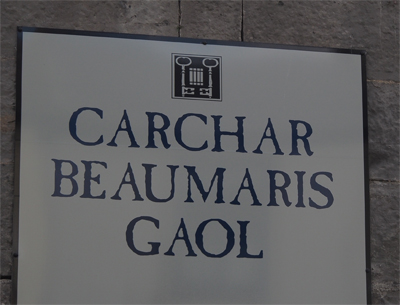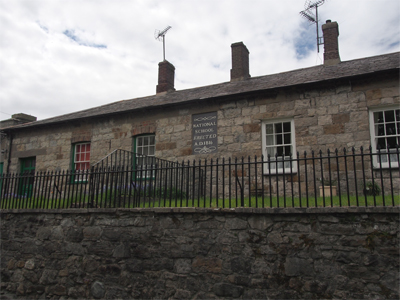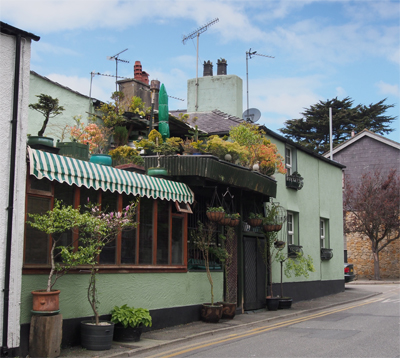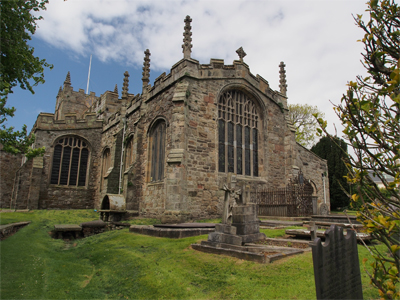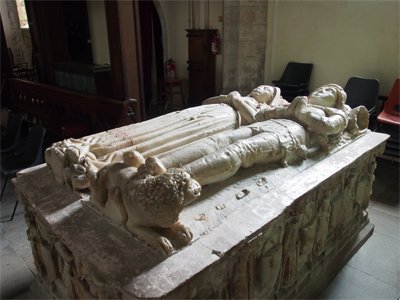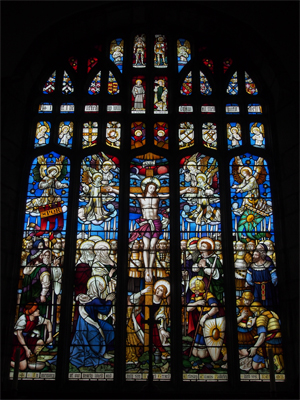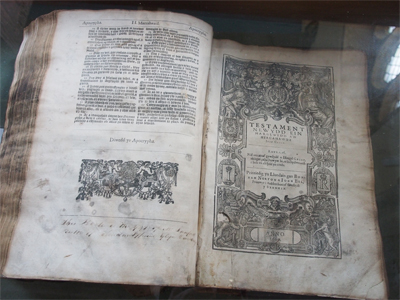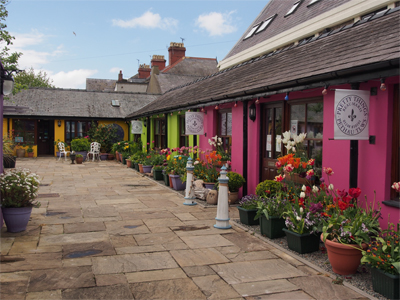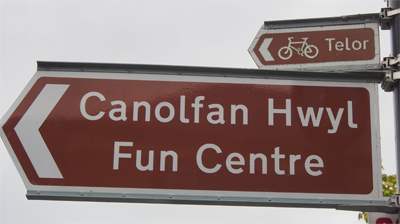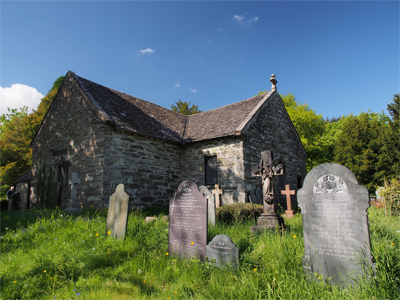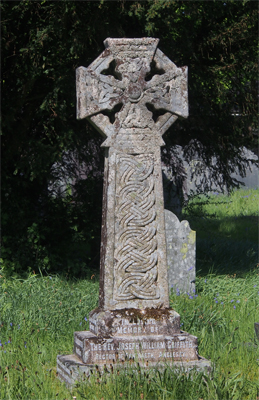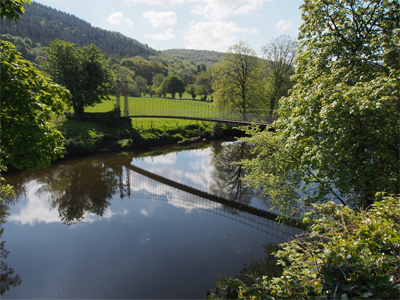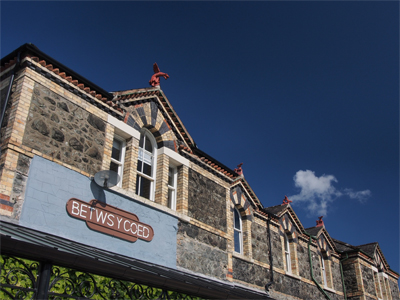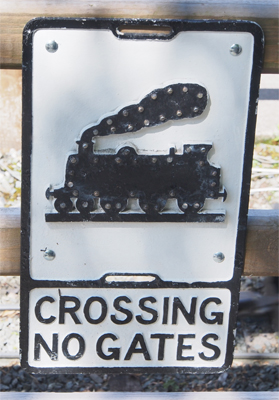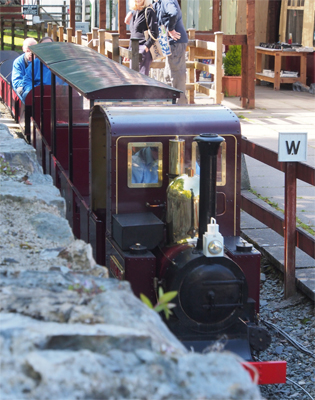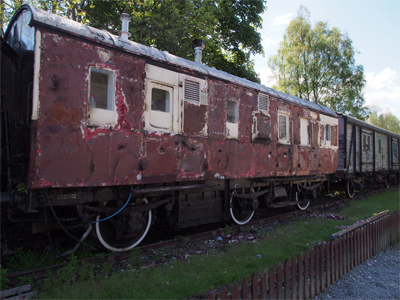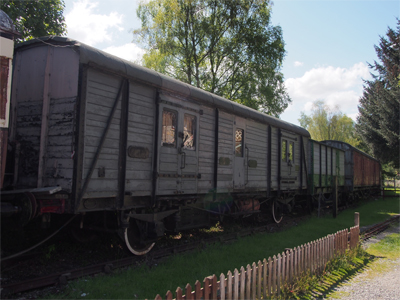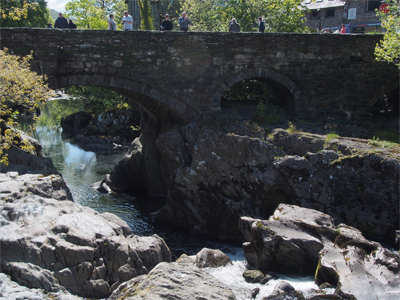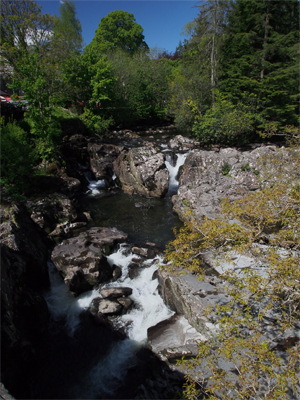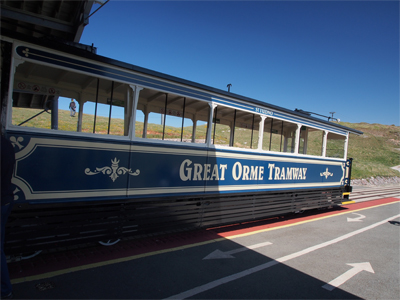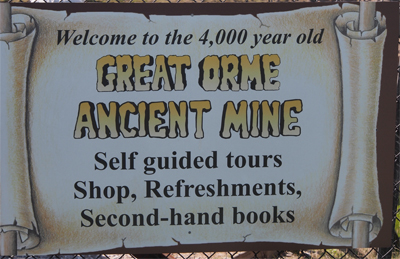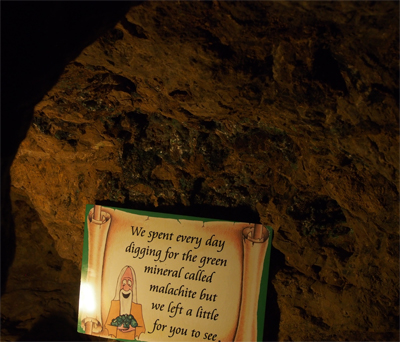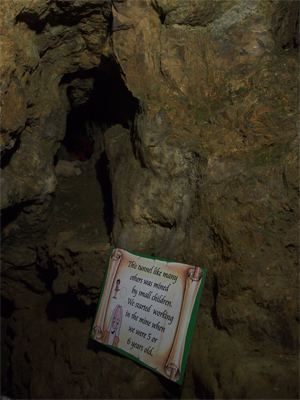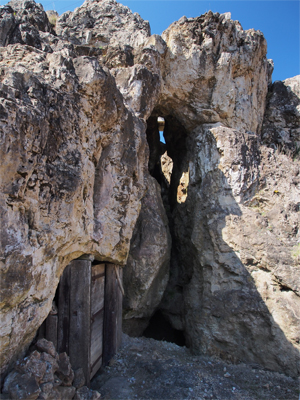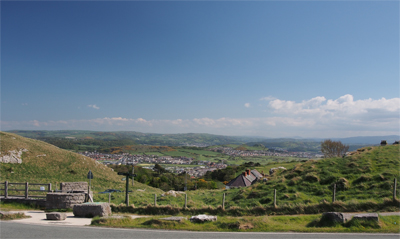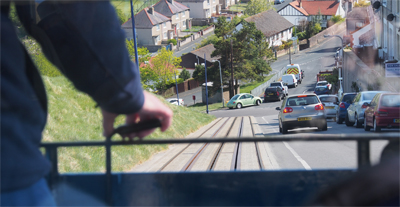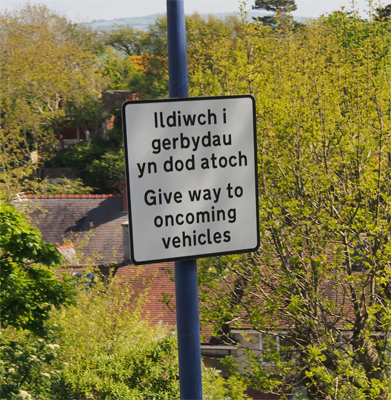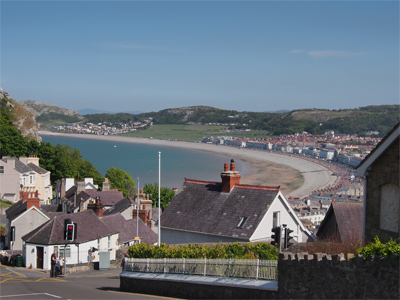Friday, 5/24/13
This morning we drove to Anglesey on an old "turnpike" road. The term derives from the pikes attached to the gate at a toll road. The gate was turned after paying to use the road. Since horsemen would try to jump the gate to avoid the fee, the pikes were added to make misery for the horse.
We went through the towns of Bethesda (a slate town), and Beaumaris (meaning beautiful marshes), and on to the Penmon Priory and Church. In the 6th c. St. Seiriol established a monastery here by a remote well. By the 10th c. he had a wooden church at the site. After Vikings destroyed the church in 971, a stone church was built. The nave of the existing church was finished about 1140. The chancel and refectory were built later. The monastery was dissolved in 1537 during Henry VIII's fight with Rome over his divorce. The church remained in use and much of it was rebuilt in 1855. By the 1830's the church became Anglican with all the bells and rituals and smells and stained glass windows. Later, Puritans removed the colored glass and statues. The present church has two ancient Celtic crosses. They have a Celtic knot with no beginning or ending on the base and a circle in the center of the cross.
We visited St. Seiriol's well, fishpond, and original gathering spot used for "church."
|
Celtic Cross
|
Ancient fetish
|
|
St. Seiriol's Well
|
We drove back into Beaumaris to look at the 19th c. gaol (jail). We couldn't get in because it is closed on Fridays. Instead we went into the 13th c. St. Mary's and St. Nicholas' Church, which again had gone through numerous religious variations. Of interest were the misericord benches that allowed the monks to rest while appearing to be standing throughout the long services. This is now a choir area.
|
Oldest house in Great Britain
|
|
|
National School
|
Street scene
|
St. Mary's and St. Nicholas' Church |
Tomb of Princess Joan of Wales, daughter of King John of England (12th century) and wife of Llywelyn the Great |
Misericord benches
|
|
1620 Welsh Bible |
Shopping area
|
Welsh bilingual sign
|
We went back to Betws-y-Coed and had lunch on our own - soup in a pub and then listened to two lectures by Conway, our tour director. He gave us some history of ancient Welsh life and then told the Welsh version of the King Arthur legend.
|
Countryside from the bus
|
Sat., 5/25/13 - Betws-y-Coed
|
|
We are in the Park
|
|
Graveyard and church |
Lych Gate
|
|
Foot bridge and reflection |
Betws-y-Coed was established for the lead mines in the surrounding hills. The Telford Road running through town allowed the transport of lead and slate to other markets. The mines were also the main reason for the railroad spur here. The railroad station is now a museum with a dining car cafe and tracks for two cute mini-steam engine trains.
|
|
Railroad Station |
Cute sign
|
Steam train for kids and others
|
Steam train |
Old rolling stock
|
Old rolling stock |
1340 Pont-y-Pair Bridge |
Cascade
|
This afternoon, the coach took us north to visit the Orme Copper Mine in Llandudno. The LL in Welsh is pronounced by putting your tongue on the roof of your mouth, behind the front teeth, and blowing air out the corners of the mouth, sort of, but not quite, a th sound – Welsh is a nearly impossible language. A further comment about the language: There are eight volumes to the Welsh dictionary. New technology and science words are translated into Welsh rather than incorporating a foreign word into the language. For instance, the Welsh word for "computer" is cyfrifiadur or a "counter of numbers." Many of the towns (suburbs) around Philadelphia have Welsh place names which we pronounce in our American fashion, not proper Welsh, e.g., Gwynedd, Bryn Mawr, Gladwyne, Tredyffryn, Llanerch, St. David’s, etc.
|
|
WWII Spitfire |
Tram up the considerable hill
|
Tram car
|
|
Herd of goats across from the mine |
Mine tour
|
Mine tour
|
Gale in her hard hat |
Mine tour
|
Stone axes recovered from the mine |
View on the way down
|
Steep grade! |
Another one of those signs
|
View on the way down |

